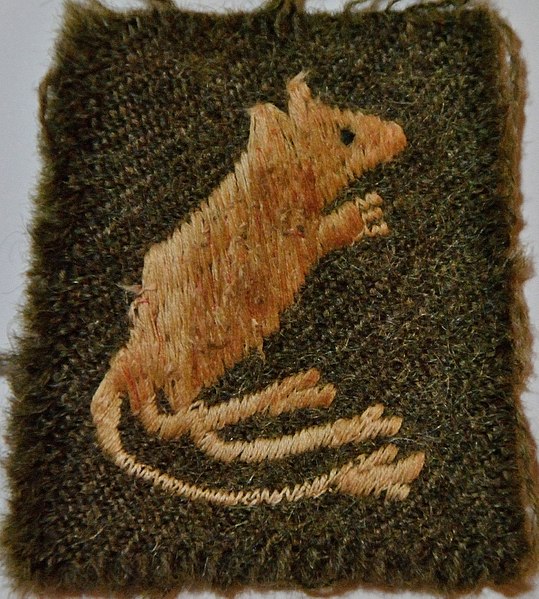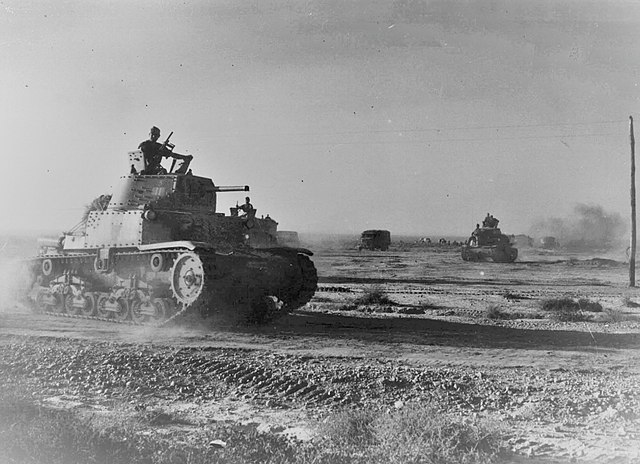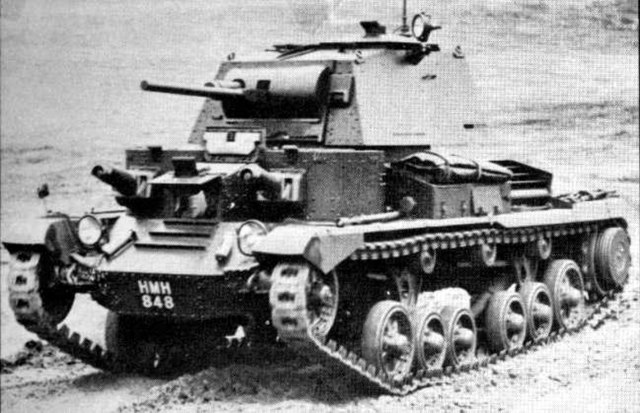7th Armoured Division (United Kingdom)
The 7th Armoured Division was an armoured division of the British Army. It was formed as the Mobile Division (Egypt) on 27 September 1938, after increased tensions between Britain and the Axis powers. This was part of an effort to reinforce and maintain the British strategic presence in Egypt to defend the Suez Canal, which was seen as vital to the British Empire's interests. In February 1940, the formation was renamed as the 7th Armoured Division. During its early years, the jerboa was adopted as the mascot and divisional insignia giving rise to the nickname Desert Rats.
7th Armoured Division (United Kingdom)
Mk VI light tanks and lorries of the 8th Hussars, assembled prior to a desert exercise, 5 June 1940.
A 2-pounder anti-tank gun being manned by members of the 2nd Battalion, Rifle Brigade (The Prince Consort's Own), 24 March 1942.
Infantrymen of the 1/6th Battalion, Queen's Royal Regiment (West Surrey) marching into Tobruk, Libya, 18 November 1942.
The Western Desert campaign took place in the deserts of Egypt and Libya and was the main theatre in the North African campaign of the Second World War. Military operations began in June 1940 with the Italian declaration of war and the Italian invasion of Egypt from Libya in September. Operation Compass, a five-day raid by the British in December 1940, was so successful that it led to the destruction of the Italian 10th Army over the following two months. Benito Mussolini sought help from Adolf Hitler, who sent a small German force to Tripoli under Directive 22. The Afrika Korps was formally under Italian command, as Italy was the main Axis power in the Mediterranean and North Africa.
British infantry in a re-enactment of their advance at El Alamein, 24 October 1942
132nd Armored Division "Ariete" attacks
Cruiser Tank Mk I (A9)
Ghibli approaches








